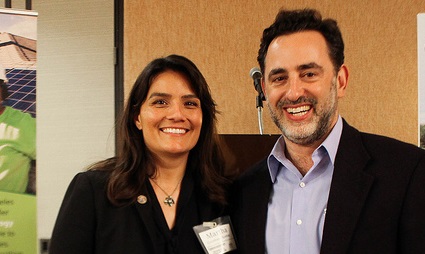On Thursday, GRID Alternatives Greater Los Angeles hosted the fourth Los Angeles Energy & Equity Policy Series (LEEPS) event. Our Shared Solar Future: Expanding Access through Community Solar brought policy experts, government officials, energy equity advocates, and community members to Long Beach to review the lessons learned from community solar successes outside of California and identify the policy pathways needed for community solar to finally take root and thrive in Los Angeles and California as a whole.
In our first panel, speakers from New York, Colorado, and the Pacific Northwest convened to discuss their experience implementing community solar in a range of policy contexts. Juan Parra (Solar One of New York City) shared how important strong community partnerships had been for overcoming barriers and implementing programs that truly benefit the community. Tom Figel, Director of Community Solar at GRID Alternatives, reviewed GRID’s community solar projects in Colorado (read more), and how low- and moderate-income community solar advocates carve out created the policy framework needed for expanding solar access and equity throughout the state.
The second panel turned inward to examine the state of community solar in California, with utility representatives, advocates, and activists reviewing recent policy developments and debating which policy changes were still needed for a truly progressive community solar program. Anthony Hernandez, GLA Board Member and Principal Manager at Southern California Edison, introduced a suite of new Green Energy programs as a critical tool to help combat climate change and an important first step for community solar in investor-owned utility territory. Ted Bardacke, Executive Director of the Clean Power Alliance (LA’s CCA), described the promise of CCAs in implementing new and innovative energy equity programs such as community solar.
With over 100 attendees from across several states, LEEPS IV proved to be an important gathering for energy justice and a step in the right direction as we position community solar as a more reaslistic possibility for populations bearing the biggest share of climate change. As Commissioner Martha Aceves-Guzman put it in her keynote: “We hope community solar is a successful mechanism to increase the less than 1% of people in low-income communities who are currently not seeing solar access. And with 300 MW more expected to come online via SOMAH progress will only continue.” Stay tuned for the next great LEEPS events!


